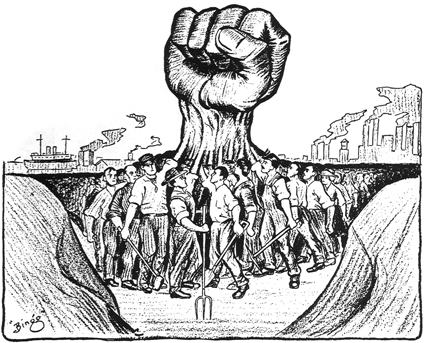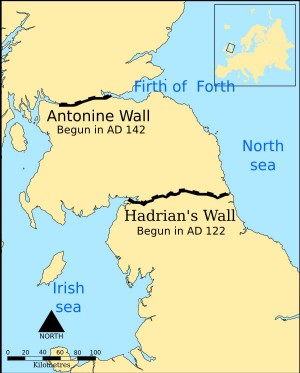The Construction of The Forth and Clyde Canal
In a time where all travel was powered by foot, the foot of man or the foot of beast, the transportation of goods was hard work and slow. In a booming industrial Britain the need to transport goods in bulk grew. Across this Island workers began to dig. Mile upon mile corridors were dug into the earth, with pick and shovel thousands of workers toiled to develop these early arteries of industrial Britain. The work was hard and the pay meagre but nonetheless for decades, sometimes generations of families, workers committed to creating the extraordinary canal network. The immense undertaking was created to last forever and as such the canals were given the name the eternal navigations. In turn the workers that dug them, the navigators or navvies for short.

The onset of the Industrial Revolution saw the need for a Scottish canal like those in England, though the Forth and Clyde Canal had a unique inspiration. The perilous journey around the north of Scotland was long and dangerous, the plan was set in motion to create safe coast to coast transit through the central belt of Scotland. In 1768 the first spadeful of earth was shifted.
“The canals and the bridges, the embankments and cuts,
They blasted and dug with their sweat and their guts
They never drank water but whiskey by pints
And the shanty towns rang with their songs and their fights.
Navigator, Navigator rise up and be strong
The morning is here and there's work to be done.
Take your pick and your shovel and the bold dynamite
For to shift a few tons of this earthly delight
Yes to shift a few tons of this earthly delight.”
Navigator, The Pogues
The Canal Company sought to employ local workers. This was to outwardly support the local economy but also importantly it was an attempt to maintain order during the project. The navvies had a questionable reputation and fights were common. Elsewhere trouble had erupted between local workers and migrant workers, a large proportion of whom had been displaced from Ireland following years of occupation and famine.
The Navvies were tough, hardened by the arduous labour, the cold weather and cheap whisky. Working for 10 pennies a day the navvies supplemented their income by working the fields. These seasonal breaks delayed the construction project. The canal's completion was further delayed by a lack of funding, causing tools to be laid down for seven years, the canal was finally completed and opened to traffic in 1790.
The story of the canals construction is one of the gross exploitation of working people to feed the pockets of the wealthy. But this does not diminish the achievement of the navvies. It was the work of the ordinary man, woman and child who through their grit and persistence to survive gave us the beauty and heritage of the Forth and Clyde. The canal is a tribute to these navvies and a constant reminder of the power of the worker.
"It is we who plowed the prairies
Built the cities where they trade
Dug the mines and build the workshops
Endless miles of railroad laid
Now we stand outcast and starving
Mid the wonders we have made
But the union makes us strong"
Solidarity Forever, Pete Seeger
It is this story of the worker that shapes who we are as an organisation, The Navvies Barge, inspiring us towards the structure as a workers cooperative.
The Romans
The story of the Forth and Clyde canal did not start in 1768 however, but brings us back to 142AD when the Roman Emperor Antoninus Pius ordered the construction of a wall, likely due to pressure from the Caledonians. This early engineering feat was 39 miles long and 10 feet high and included a series of 16 forts. The savvy Roman engineers had worked out the most direct route to cut off the north of Scotland. It was reasonably flat and direct using the existing barriers of the River Clyde and the River Forth. Fast forward 1600 years to the decision to make a navigation that cuts across Scotland making transport from east to west quicker

It may be flippant to suggest that the engineers designing the canal stole the Romans' homework, but upon studying the best route to take, incredibly they discovered that the Antonine Wall provided a perfect route. The "Military Way" of the Romans was to be used again.
Towpath Talk
As the boats started moving along the canal it is fascinating to think about the conversations that took place. What history has this waterway known? Shortly after the completion of the canal Napoleon rose to power in France. Uniquely the Forth and Clyde Canal was designed for moving ships from coast to coast, as opposed to English Canals largely designed for moving cargo inland. This new wave of conflict in Europe saw the need for the royal navy to expand with ships becoming larger. This quickly meant that one of the original purposes of the canal became less functional.
11 years after the completion of the canal the United Kingdom of Great Britain and Ireland was formed. How might this have impacted the towpath talk among the Scottish, Irish and English Navvies who had dug the cut and continued to work it?
They may have been distracted by an illicit trade taking place along the canal. With new navigational routes saw new possibilities, and this was not lost on the distillers of Islay. This route from the east to the west meant a boom for Islay Whisky as access to the grain fields of Fife became more readily available. Barges loaded with barley made their way across the canal and off to the islands. A crop failure in 1795 saw the stills of the Islay tenant farmers seized. This had little effect however as the whisky industry went underground and continued to thrive, helped in part by being fed by the Forth and Clyde canal. If ever there was a need for a reason to enjoy a dram onboard, there you have it…
All the news of the day would be discussed and consumed along the canal, such as the development of a new type of boat, the steam boat. Completed in 1803 the Charlotte Dundas was a paddle steamer constructed in Grangemouth on the eastern side of the canal. This boat paved the way for sea faring steam powered boats. Passenger boats frequented the canal with 44,000 passengers by 1812. The boats were vast with food and drinks served. This revolutionary mode of transport allowed for quick mass transit in comfort. Something unheard of at the time.
The world wars brought new challenges to the canals, barracks were established on boats, factories were transformed to produce munitions and the canals were put on a war footing. During WW2 the canals were highlighted as a risk, the enormous top pound of water meant that the canal became a target for bombing as a breach would cause a huge disruption to the working of the canal and the city it would flood. Defences were put in place such as the barrier at the Stockingfield bridge to cut the canal off should there be a breach.
The canal fell into decline as its commercial need was diminished by trains and the world advanced around it. But its story continues. The eternal navigation is still alive and finding a new purpose in the modern world. Its slow pace providing an antidote to a fast world.
The canal's stories and its people are what makes the canal so captivating. Which is where you come in. We would love to build the story of the canal with your stories. Talk to us on trips about your connection with the canal or email so we can collate more of the history of the cut.
History Snug
Our history snug has a collection of wonderful photos from the canal along with history books. It is a cosy room to sit and ponder the canal through the years. The photos are beautiful black and white pictures that capture the canal as it was. Keep an eye out for the locations in the photos as you cruise along the canal with us. We are looking to build this room to include a more complete history with historical news articles and stories from the people who call it home.







